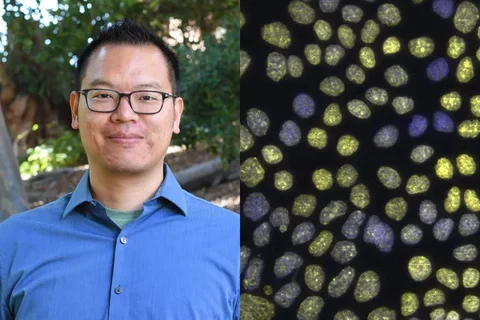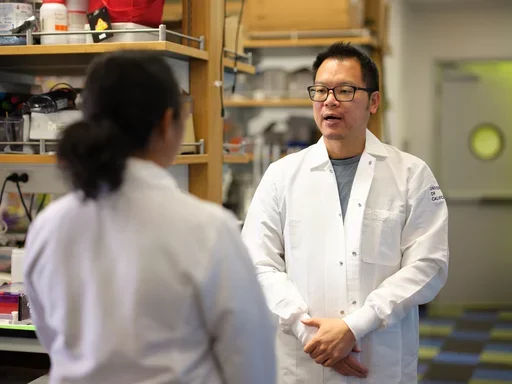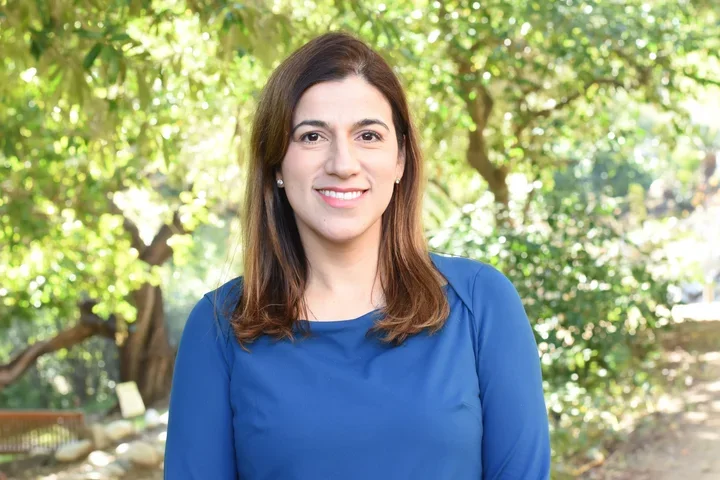Does Cell Nucleus Size Matter in Gene Activity? Researchers Say Yes
A group of UCLA researchers including Dr. Jimmy Hu has discovered that the size of a cell can determine which genes are turned on or off.

A group of UCLA researchers has discovered that the size of a cell, especially its nucleus that holds the DNA can determine which genes are turned on or off. This breakthrough helps explain how cells develop and function, with potential implications for understanding diseases like cancer.
“For years, scientists have known that cell sizes can affect gene expression and influence developmental processes, but it wasn’t clear how that led to certain biological changes,” said Neil Lin, a co-principal investigator of the new study published in Communications Biology and an assistant professor of mechanical and aerospace engineering and bioengineering at the UCLA Samueli School of Engineering. “Our study went a step further by revealing that when cells divide unevenly, producing daughter cells with different sizes and shapes, these size differences directly affect how DNA is packaged inside the nucleus.”
Specifically, the research shows that the size of a cell’s nucleus can change important chemical tags associated with the DNA, called chromatin modifications, which then impact gene activity. In simpler terms, this means that differences in cell and nucleus size can directly control whether certain genes are turned on or off, providing a clearer explanation of how physical differences among cells lead to functional differences in tissues.
Along with other recent studies that focus on the physical characteristics of cells and the various physical stresses placed on cells, this new research approach broadens the scope of examining different factors that can affect gene expression beyond the biochemical processes within cells.
Working with cell cultures and mice, the researchers looked at epithelial cells, a common cell type that makes up the tissue’s lining in many organs. They investigated how a cell’s size and shape influence its nucleus size and the state of its chromatin, a collection of genomic DNA wrapping around basic proteins called histones. Different chemical modifications of histones influence which genes are active in a cell.

The team used a combination of high-resolution microscopy techniques and machine learning analysis across a large data set to correlate, and then successfully predict, how cell size corresponds to gene activity. The researchers focused on a specific histone modification, “H3K27me3,” which represses gene activity, and found that the larger a cell’s nucleus was relative to its size, the fewer repressive histone proteins were formed. In other words, a larger nucleus is correlated with an increase in gene activation.
In addition, the researchers observed that the resulting differences in cell size began when cells first divided, with differences already established between the two daughter cells.
“Now that we know the size of your cells indeed influences how your genes behave, we are working on further understanding this physical mechanism on gene activity,” said study lead author Alexandra Bermudez, a UCLA bioengineering doctoral student and member of Lin’s research group.
The researchers said their findings have broad implications across a full range of biological processes.
"What is fascinating about this cell size-dependent chromatin regulation is its presence across various biological systems, from cultured cells to animal tissues,” said study co-principal investigator Jimmy Hu, an assistant professor of oral and systemic health sciences at the UCLA School of Dentistry who leads a research group studying organ development. “This may be one way in which diverse cellular behaviors and responses arise.”
At UCLA, Lin and Hu are both members of the Broad Stem Cell Research Center. Lin is also a member of the Jonsson Comprehensive Cancer Center and the Institute for Quantitative and Computational Biosciences. Hu is a member of the Molecular Biology Institute.
Other authors of the study include Zoe Latham, a UCLA bioengineering undergraduate student; Alex Ma, a recent UCLA bachelor’s degree graduate in bioengineering; and Dapeng “Max” Bi, an associate professor of physics at Northeastern University. The research was supported by the National Science Foundation, the National Institutes of Health, and the Alfred P. Sloan Foundation.



